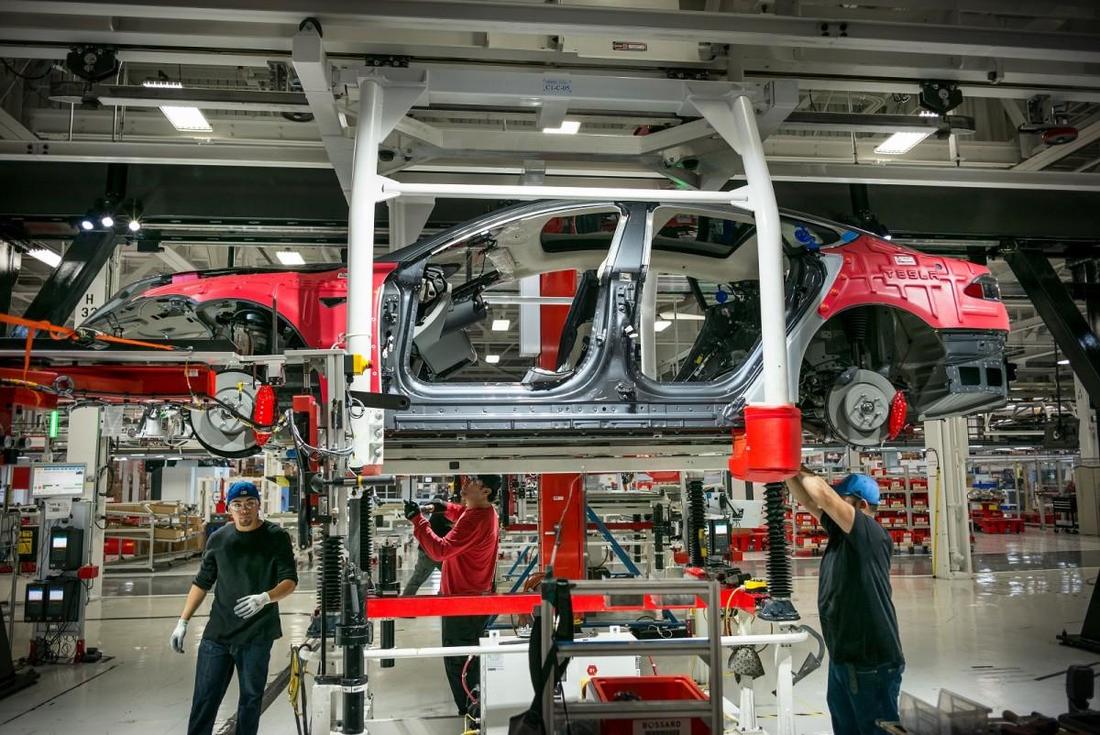Tesla announced that they magically crossed the 2000 units/week threshold in the last week of 2018’s first quarter. Perfect timing when they’d been struggling with Model 3 production since forever. Second, Tesla stock had been crashing as investors started realizing that the Tesla ship was heading straight for an iceberg of debt repayments. Tesla announced that they didn’t foresee any need to raise capital in 2018. Never mind that Elon Musk made the same pronouncement last year and raised more capital only a few months later.
I can’t stress how important Tesla’s stock price is to their survival. In the past, Tesla has been able to deal with convertible bonds by repaying them with stock. This only works if the price of the stock is greater than the value of the bonds. If the stock price is too low, then Tesla has to write a check for cash. In late 2018 that bill would come to approximately $1.2 billion. Coupled with an expected cash burn of $2 billion, this could be catastrophic. Elon Musk’s number one job is actually pumping the stock price. That’s the real reason he sleeps in the plant and makes a big show of it.
Now before I go on, I have to explain one thing. A company’s production rate is how many units they can transition from work-in-process (WIP) to finished goods. This metric can be skewed by how a company manages their WIP. For example, I’ve been in plants where a key component was missing, so partially assembled units began to stack up in the warehouse. During the period the partially assembled units were accumulating, the plant looked horrible because they were showing excess labor and overhead for relatively few units. However, when the needed component arrived, the plant looked like a superhero because they could take credit for finishing partially finished WIP units all at once.
What does this have to do with Tesla? It’s relevant because Tesla didn’t gradually ramp up to 2000 units/week but made a big jump in the final week of the quarter. That means that the week after this single heroic week wouldn’t get any coverage. Also, there were some peculiar items of note preceding this big week.
The order of events at Tesla is in a pattern which is familiar to me. With my background in manufacturing accounting and knowledge of how Gateway committed fraud, a few things jump out at me in Tesla’s timeline.
Feb 20 - 24: Tesla suspends Model 3 production
Mar 7: Tesla’s Corporate Controller and Chief Accountant quitsfor “personal reasons”
Mar 13: Tesla announces that their corporate treasurer and VP of finance has left
Mar 29: Tesla shifts workers from Model S and X to the 3
Mar 31: Tesla magically crosses the 2,000 units/week production rate
I was working at Gateway when Ted Waitt made his return to the company in the aftermath of a big accounting scandal. The CEO, CFO, corporate controller, and others left the company after the SEC charged Gateway with fraud.
In a nutshell, here’s what Gateway was guilty of. At the end of the quarter, if Gateway was going to miss their sales revenue goals, they would build computers that they didn’t need and “ship” them to a warehouse down the street from the plant. After the quarter was over, they would process a return for all of these unneeded units. The SEC got wind of what was happening and formally charged the chief financial officer and corporate controller with fraud.
Executive churn is usually triggered by a difference of opinion between the CEO and a particular VP. That’s not uncommon when it comes to engineering or marketing. But in accounting? It’s usually a non-issue. You have to follow U.S. GAAP (Generally Accepted Accounting Practices) or there will be criminal consequences. If the CEO is pushing the accounting group to do something against his better judgement, then you either resign or get fired. It’s better than facing fraud charges as in Gateway’s case.
Back to Tesla. If they wanted to partially “pre-build” units to supercharge a future period, you would have to do exactly what Tesla did. Announce a shutdown period because the plant would get no credit for this labor if they aren’t completed and transitioned into finished goods. This would swell Tesla’s WIP with units that are partially or maybe even mostly completed but waiting for the final assembly. Then you would have to get more workers to work on an alternate line or at an alternate location to finish these partially assembled units. You can’t use the workers from the main line because they’re busy with the current orders.
The red flag with Tesla’s production spike is the fact that they used workers from the Model S and X lines. If their Model 3 production line was operating at an improved rate, no additional workers would be necessary. That’s the whole point of a highly automated line. Tesla supposedly shut down their Model 3 line in February in order to improve it. That would show up in improved parts/person metrics. They need to get out more cars with no additional people.
I’ve worked around manufacturing plants for many years. I recognize what triggers moving workers from other lines. Setting up an auxiliary line to blow through accumulated WIP. It sounds to me like Tesla’s uptick in production was due to a big push that can’t be sustained. Even if Tesla wanted to operate a highly manual auxiliary line on the side, the sheer cost of the inefficiency would sink the Model 3’s gross margins. The Model 3 production rate becomes irrelevant if Tesla is selling at low margins. Investors will abandon Tesla if this happens.
You’d end up with a one-time spike of production that is bogus because you’re taking credit for partially built units from a prior period. Did Tesla do this? I have no idea. But if they did do it, everything lines up. The timeline is exactly what I’d expect to see.
It also comes to mind because of the exodus of the accounting personnel during this same time frame. If Tesla did do this, I’m not sure it’s necessary illegal. But it would come dangerously close. Close enough that the accountants would be forced to decide whether to leave the company rather than acquiesce to a stubborn boss hell-bent on raising the stock price.
The accountants at Gateway objected to the operations managements scheme to goose sales at quarter-end. But in the end, they went along with it and signed off on the financial results. Ultimately, they were held responsible for reporting fraudulent revenue on the income statement.
Why did Tesla’s accounting executives leave in between the time that the line shut down and Tesla reported their quarter-end production spike? I don’t know. But I do know this. By leaving when they did, they didn’t have to sign off on the Q1 financial statements.
Now available in iBooks —> The Tesla Bubble




 RSS Feed
RSS Feed